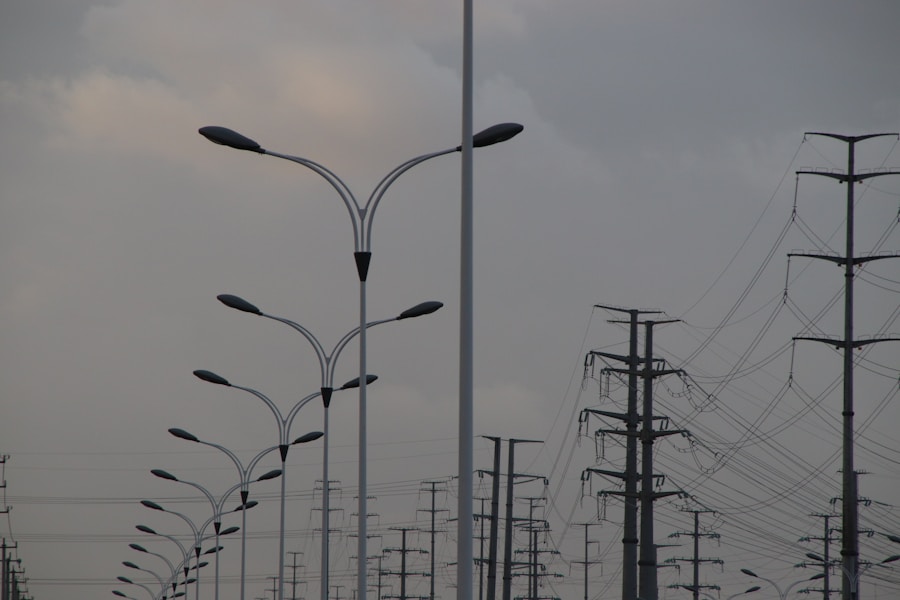In an era where sustainability and efficiency are paramount, Intelligent Energy Systems (IES) have emerged as a transformative force in the energy sector. These systems leverage advanced technologies, including artificial intelligence, machine learning, and the Internet of Things (IoT), to optimize energy consumption and distribution. By integrating real-time data analysis with automated controls, IES not only enhance energy efficiency but also contribute to reducing carbon footprints and promoting renewable energy sources.
As the world grapples with climate change and the depletion of fossil fuels, the adoption of intelligent energy systems is becoming increasingly critical. The concept of IES encompasses a wide range of applications, from smart homes equipped with automated lighting and heating controls to large-scale energy management systems for cities and industries. These systems are designed to respond dynamically to changing energy demands, ensuring that resources are utilized effectively.
As technology continues to evolve, the potential for IES to revolutionize how we generate, distribute, and consume energy is immense. This article delves into the intricacies of intelligent energy systems, exploring their mechanisms, benefits, challenges, and future trends. AI systems are revolutionizing industries, for more information visit AI systems.
Key Takeaways
- Intelligent energy systems use advanced technology to optimize energy usage and distribution.
- Energy usage optimization involves using data and automation to reduce energy waste and improve efficiency.
- Automated lighting control offers benefits such as energy savings, improved comfort, and increased security.
- Smart grids play a crucial role in efficiently distributing energy and integrating renewable energy sources.
- Integrating renewable energy sources into intelligent energy systems is essential for sustainability and reducing carbon emissions.
- Challenges in implementing intelligent energy systems include cost, interoperability, and cybersecurity, which can be addressed through innovative solutions.
- Case studies of successful intelligent energy systems implementation showcase the real-world benefits and potential of these systems.
- Future trends in intelligent energy systems include increased use of artificial intelligence, advanced energy storage solutions, and greater integration of IoT devices for energy management.
Energy Usage Optimization: How It Works
Predictive Energy Demand
By employing sophisticated algorithms and machine learning techniques, IES can predict energy demand based on historical data, weather conditions, and user behavior. This predictive capability allows for proactive adjustments in energy supply and consumption, ultimately leading to significant cost savings and reduced environmental impact.
Smart Metering and Sensing
One of the key components of energy usage optimization is the integration of smart meters and sensors throughout a facility or home. These devices collect real-time data on energy consumption, providing insights into usage patterns that can inform decision-making.
Granular Energy Management
For instance, a smart thermostat can learn a household’s heating and cooling preferences over time, adjusting settings automatically to maintain comfort while minimizing energy use. Similarly, businesses can utilize data analytics to optimize their operations, scheduling machinery and equipment usage during off-peak hours when energy rates are lower. This level of granularity in energy management not only enhances efficiency but also empowers users to take control of their energy consumption.
Benefits of Automated Lighting Control

Automated lighting control is one of the most visible applications of Intelligent Energy Systems, offering a myriad of benefits for both residential and commercial spaces. By utilizing sensors and smart technology, automated lighting systems can adjust illumination levels based on occupancy, natural light availability, and specific user preferences. This not only enhances comfort but also leads to substantial energy savings.
For example, lights can be programmed to turn off automatically in unoccupied rooms or dim when sufficient daylight is present, reducing unnecessary electricity consumption. Moreover, automated lighting control contributes to improved safety and security. In commercial settings, motion sensors can trigger lights in response to movement, ensuring that areas are well-lit when needed while deterring potential intruders in the absence of activity.
In residential environments, smart lighting systems can be programmed to simulate occupancy when homeowners are away, providing an added layer of security against break-ins. The convenience of controlling lighting remotely via smartphone apps further enhances user experience, allowing individuals to customize their environments effortlessly.
The Role of Smart Grid in Energy Distribution
The Smart Grid represents a significant advancement in energy distribution, serving as the backbone for Intelligent Energy Systems. Unlike traditional power grids that rely on one-way communication from utility providers to consumers, smart grids facilitate two-way communication between all stakeholders involved in the energy ecosystem. This enhanced connectivity allows for real-time monitoring and management of energy flows, enabling utilities to respond swiftly to fluctuations in demand and supply.
One of the primary advantages of a Smart Grid is its ability to integrate distributed energy resources (DERs), such as solar panels and wind turbines. By harnessing these renewable sources, smart grids can reduce reliance on fossil fuels while promoting sustainability. Additionally, they enable consumers to become active participants in the energy market by allowing them to sell excess energy back to the grid or participate in demand response programs.
Integration of Renewable Energy Sources
The integration of renewable energy sources is a cornerstone of Intelligent Energy Systems, aligning with global efforts to transition towards cleaner energy solutions. As solar and wind technologies become more affordable and efficient, their incorporation into IES is increasingly feasible.
For instance, battery storage systems can store excess energy generated during peak production times—such as sunny afternoons for solar panels—allowing it to be used later when demand is higher or production is lower. This capability not only stabilizes the grid but also maximizes the utilization of renewable resources. Furthermore, intelligent algorithms can optimize the dispatch of renewable energy based on real-time demand forecasts, ensuring that clean energy is prioritized whenever possible.
As a result, IES play a pivotal role in reducing greenhouse gas emissions while promoting a sustainable future.
Challenges and Solutions in Implementing Intelligent Energy Systems

Despite the numerous advantages offered by Intelligent Energy Systems, several challenges hinder their widespread adoption. One significant barrier is the high initial investment required for infrastructure upgrades and technology implementation. Many organizations may be hesitant to allocate resources towards these systems without clear evidence of return on investment (ROI).
Additionally, concerns regarding data privacy and cybersecurity pose significant risks as more devices become interconnected within the energy ecosystem. To address these challenges, stakeholders must prioritize education and awareness around the long-term benefits of IES. Demonstrating successful case studies can help build confidence among potential adopters by showcasing tangible results in terms of cost savings and efficiency improvements.
Furthermore, developing robust cybersecurity protocols will be essential in safeguarding sensitive data while ensuring that systems remain resilient against potential threats. Collaborative efforts between governments, private sectors, and research institutions can also facilitate funding opportunities and incentives for organizations looking to invest in intelligent energy solutions.
Case Studies of Successful Intelligent Energy Systems Implementation
Several case studies exemplify the successful implementation of Intelligent Energy Systems across various sectors. One notable example is the city of San Diego, California, which has embraced smart grid technology to enhance its energy management capabilities. By deploying advanced metering infrastructure (AMI) and integrating renewable resources like solar power into its grid, San Diego has achieved significant reductions in peak demand while increasing overall grid reliability.
The city’s commitment to sustainability has not only improved its environmental footprint but has also positioned it as a leader in smart city initiatives. Another compelling case study comes from Siemens’ implementation of intelligent building management systems at its headquarters in Munich, Germany. By utilizing IoT sensors and advanced analytics, Siemens has optimized its energy consumption across various building functions—such as heating, ventilation, air conditioning (HVAC), and lighting—resulting in a 30% reduction in overall energy use.
This initiative not only demonstrates the potential for cost savings but also highlights how intelligent systems can create healthier indoor environments for occupants.
Future Trends in Intelligent Energy Systems
As technology continues to advance at an unprecedented pace, the future of Intelligent Energy Systems looks promising. One emerging trend is the increased adoption of artificial intelligence and machine learning algorithms for predictive analytics in energy management. These technologies will enable more accurate forecasting of energy demand and supply fluctuations while optimizing resource allocation in real-time.
Additionally, as electric vehicles (EVs) become more prevalent, their integration into Intelligent Energy Systems will play a crucial role in shaping future energy landscapes. Smart charging solutions will allow EVs to draw power during off-peak hours or even return electricity back to the grid during peak demand periods—creating a symbiotic relationship between transportation and energy systems. Furthermore, advancements in blockchain technology may revolutionize how energy transactions are conducted within decentralized networks.
By enabling peer-to-peer trading of renewable energy among consumers, blockchain could enhance transparency while fostering greater participation in sustainable practices. In conclusion, Intelligent Energy Systems represent a paradigm shift in how we approach energy consumption and distribution. By harnessing cutting-edge technologies and innovative strategies, these systems pave the way for a more sustainable future while addressing pressing global challenges related to climate change and resource depletion.
As we continue to explore new frontiers in this field, it is clear that intelligent energy solutions will play an integral role in shaping our world for generations to come.
One interesting article related to Intelligent Energy Systems is “Community and Culture in the Metaverse: User-Generated Content in the Metaverse.” This article explores how online communities in the metaverse can play a role in shaping culture and fostering creativity. It discusses the impact of user-generated content on virtual worlds and how it can influence the development of new technologies, such as energy usage optimization and smart grid systems. To read more about this topic, check out the article here.
FAQs
What are intelligent energy systems?
Intelligent energy systems are advanced technologies and strategies that optimize energy usage, automate lighting control, and improve the efficiency of smart grid and energy distribution.
How do intelligent energy systems optimize energy usage?
Intelligent energy systems use advanced sensors, data analytics, and automation to optimize energy usage in buildings, industrial facilities, and other applications. They can adjust energy consumption based on real-time data and user preferences to minimize waste and reduce costs.
What is automated lighting control in the context of intelligent energy systems?
Automated lighting control refers to the use of sensors, timers, and smart devices to automatically adjust lighting levels based on occupancy, natural light levels, and time of day. This helps to reduce energy consumption and improve the overall efficiency of lighting systems.
How do smart grid and energy distribution benefit from intelligent energy systems?
Intelligent energy systems improve the efficiency and reliability of smart grid and energy distribution by enabling real-time monitoring, predictive maintenance, and demand response capabilities. This helps to reduce energy losses, optimize grid operations, and integrate renewable energy sources more effectively.
What are the key components of intelligent energy systems?
Key components of intelligent energy systems include advanced sensors, energy management software, automation controllers, communication networks, and smart devices. These components work together to optimize energy usage, automate lighting control, and improve the efficiency of smart grid and energy distribution.











Leave a Reply